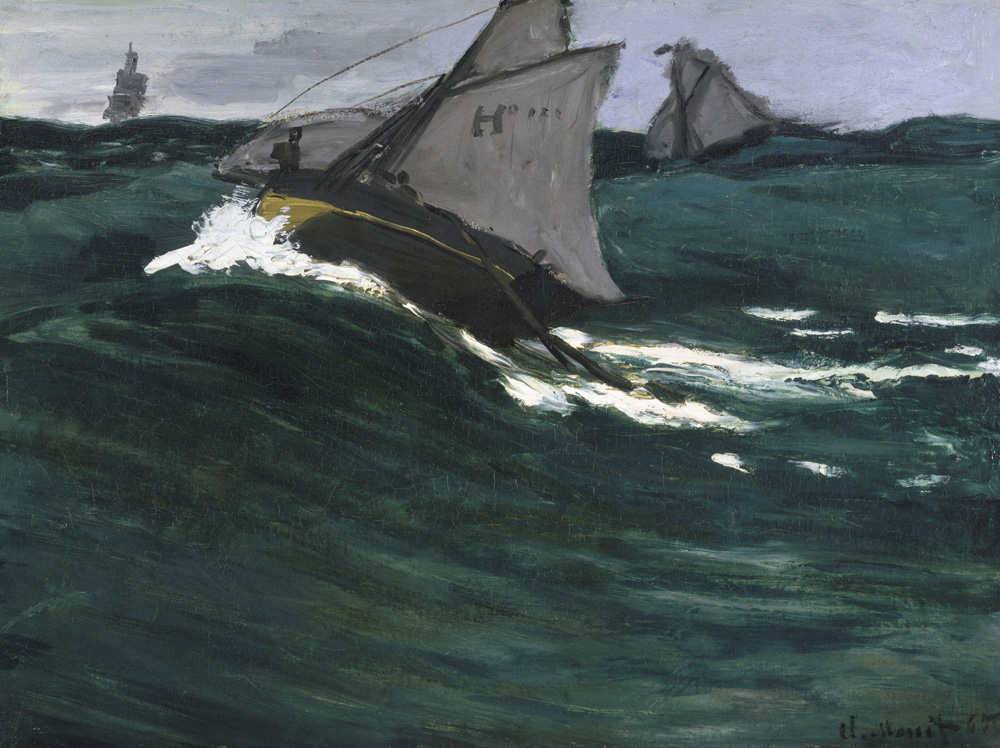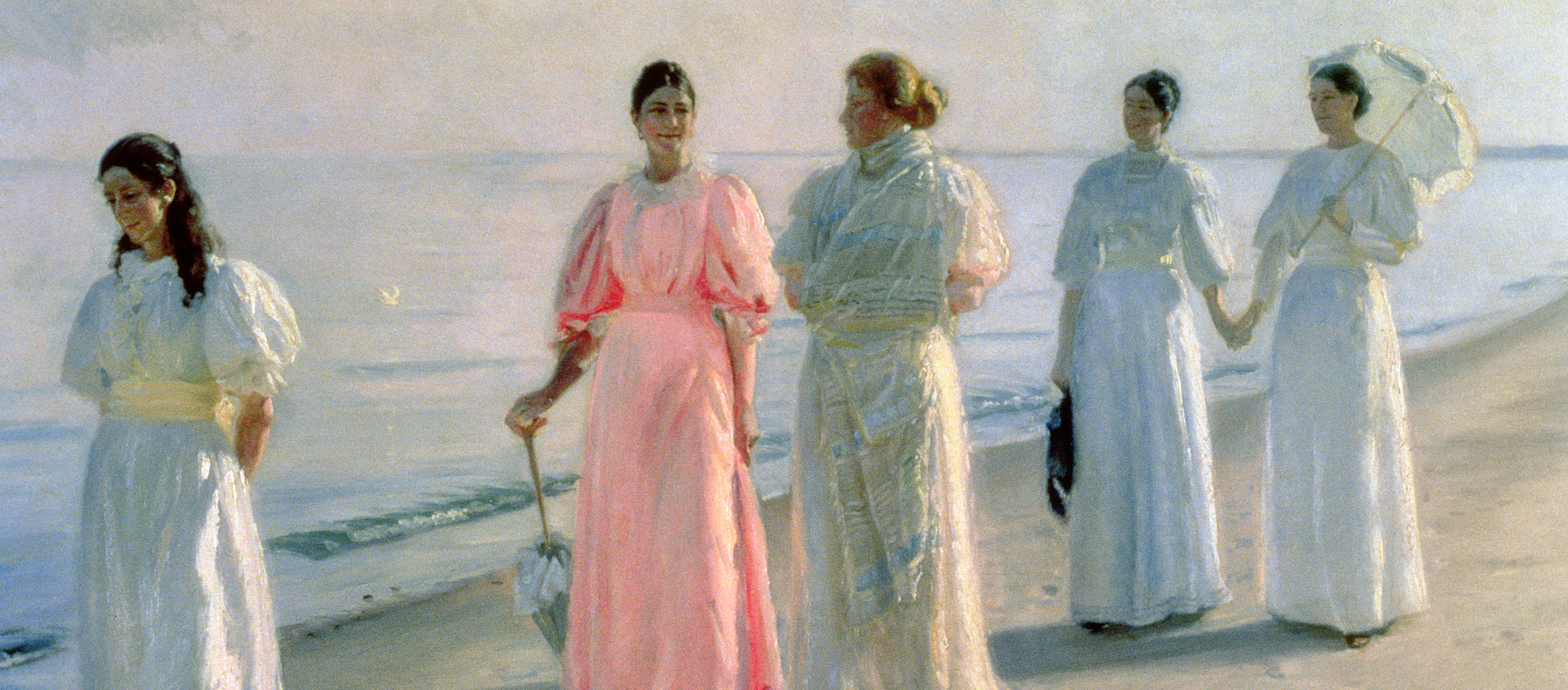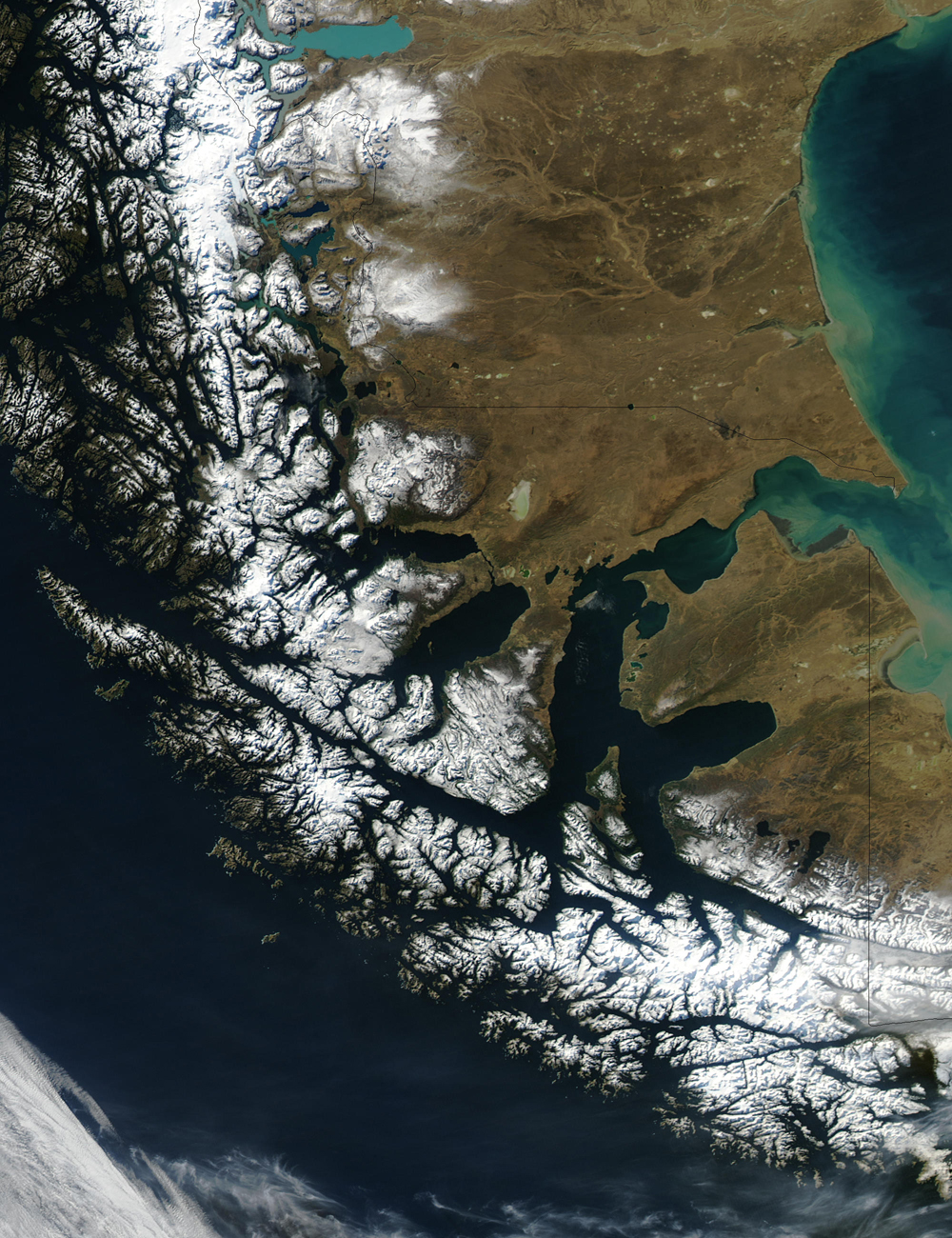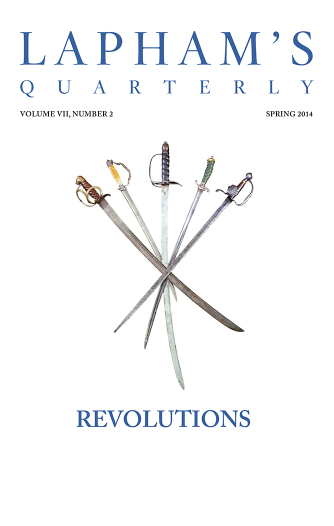A fair complexion is unbecoming to a sailor: he ought to be swarthy from the waters of the sea and the rays of the sun.
—Ovid, 1 BCSecuring the Hatches
Richard Hughes braves a hurricane and lives to tell the tale.
At nine o’clock, when the Archimedes was hove to, the wind force had been only seven (on the Beaufort scale), and the barometer stood at 29.58. By noon the barometer had dropped to 29.38—and the wind force was ten.
The seas, huge lumps of water with a point on top, ran about in all directions in a purposeful way at immense speeds. They were as big as houses and moved as fast as trains. Sometimes they ran into each other, hard, and threw themselves jointly into the air. At others they banged suddenly against the ship and burst out into a rapid plumage of spray that for a moment hid everything. The windows of the bridge, high up as they were, were completely obscured by spray: it was only through the little “clear-vision screen” (a fast-spinning wheel of glass which water cannot stick to) that it was possible to see at all. For if you stepped out onto the ends of the bridge, where there was no glass, the wind blew your eyes shut immediately.
At two o’clock the chief engineer, Mr. MacDonald, being rather old, went to his room for a rest, and a junior officer, Dick Watchett, also went to his room, to see he had left nothing breakable in a place where it could break. The fourth engineer was left in charge of the hissing engine room. Captain Edwardes and his first mate, Mr. Buxton, were both on the bridge, and intended to remain there. The wind was still increasing. The roaring so hammered on the ears as to tend to frighten the brain within. The atmosphere was almost all spray now—you could not see through it. Except for occasional momentary lulls, you could not see the sea, or the deck even. It was only by the wincing of the ship you knew what huge waves were hitting her; by that, and the thunderous banging. You could not see anything. Standing in the damp chart room, you could descry through the glass the little Chinaman, the quartermaster, on his mat, at the wheel; but nothing outside, and it was only by shouting close into one another’s ears that they could hear.

The Green Wave, by Claude Monet, c. 1865. The Metropolitan Museum of Art, H. O. Havemeyer Collection, Bequest of Mrs. H. O. Havemeyer.
The fiercer a hurricane is, the smaller the area (as a rule) which it covers, and so the sooner it should be over. By that evening, with luck. That was, if nothing untoward happened.
But at two o’clock, there happened something very untoward indeed. For at two o’clock the engines, at half speed, began to appear to be inadequate to keep her nose into the wind. So Captain Edwardes telegraphed for full speed ahead. Yet that seemed to make no difference: the propeller, unable anymore to hold her, only roared in the helpless milk under her stern.
She was turning. The seas were battering more on the starboard side. The wind was on the starboard bow.
The quartermaster was making frantic signs through the window that something had gone wrong with the steering. So that was it! However, there was nothing to be done but watch the compass needle creep around in the compass. For by the time anyone could get the emergency wheel on the poop in action, she would be broadside; and then no power on earth could straighten her again till the wind eased. It took about five minutes altogether, and then she was lying broadside to the wind, heeled over steeply, vulnerable; and Mr. Buxton, noting the time, entered it in the log.
He also noted, with satisfaction, that her motion was a short, sharp rolling. This might be uncomfortable, but from the point of view of stability it was satisfactory. But she was heeled over so far that walls and floor seemed to have almost equal claims to represent the horizontal.
In the wheelhouse, the little Chinese quartermaster clung to the useless wheel, like a cold monkey to the neck of its master. A sudden lurch tore him off. The mat on which he stood skiddered down the steep slope of the bridge—a snapshot (from the chart room) of the Chinaman shooting by, with a concentrated expression, on his inadequate toboggan—then he fetched up against the rails at the far end with such a terrific impact as to bend them and send the shield of the navigating light spinning into the sea. There he stopped, inert, on the brink: till Buxton and the captain together managed to drag him back. Was he dead or alive? One does not bend iron rails with one’s body for nothing. Yet, oddly enough, he was alive.
These steering rods were his, and though the matting was Mr. Buxton’s he knew he ought to have vetoed its presence in that passage, near his rods. But he had not noticed it, and now it had jammed the steering.
As soon as he felt the ship turn, Dick Watchett tried to leave his room. But he could not. The wind had fixed the door shut. It would have held it against an elephant. He was a prisoner there. He would have to stay there till a lull came and let him out.
Captain Edwardes telegraphed to the engine room to reduce speed to dead slow; if full speed ahead could not hold her, it was better to save the engines.

Promenade on the Beach, by Michael Ancher, c. 1896. Skagens Museum, Denmark.
The force of the wind continued to increase. Through its solid roar, nothing—not even the impact of the seas—could now be heard. Captain Edwardes had been through several hurricanes, but never anything like this. He tried to assess its velocity, but he had nothing to go by. There is no figure on the Beaufort scale to express such a wind force as this was. No anemometer is made that would register so great a ferocity of air. Any yet made would be smashed by it. He thrust his hand out, for a moment, into the force of the spray, then drew it back bleeding at the fingertips and numbed as if by an electric shock. For the wind was blowing now with a velocity of about two hundred miles an hour. It begins to be called a hurricane when it reaches seventy-five, and the pressure at two hundred would be seven times greater. To be exposed to a wind like this was of the order of having to cling to the bare wings of an airplane racing.
When a hurricane blows the roof off a house, it does not as a rule get inside the house and burst it from within. The flow of the wind over the roof makes a vacuum on the lee side of the roof, and so sucks it off. When the Archimedes heeled over away from the weather, her deck made an angle very similar to the lee side of a roof: therefore the suction this wind exerted on it must have been terrific. But decks, of course, are enormously strong. Hatches, on the other hand, are not. They are the most vulnerable part of a ship, and just as vulnerable on a big ship as a little one, because on almost every ship that ever sailed, from a liner to a coasting smack, they are made exactly the same. They are a set of oblong sections of wood, of standard size (each one no larger than can be conveniently shifted by two men), laid loosely upon beams, the whole secured by a covering of tarpaulin stretched tight and fastened round with wedges. Shortly after three o’clock, the wind, though it maintained its full force, and in gusts increased it, became more unsteady; thus there were rifts in the spray, through which an occasional view of the sea could be had. It was through one of these rifts Captain Edwardes saw some wreckage float by.
“Someone else is in trouble,” he said.
“They aren’t,” said Mr. Buxton, who was familiar with every inch of the ship. “Those are our number two hatches.”
The spray had cut the tarpaulins, as with a knife: and the wind had sucked the hatches out like drawing a cork from a bottle. Though no heavy seas were coming on board, the spray was so nearly solid water that hundreds of tons would find their way below in a very short time.
Dick’s door remained jammed. He was shut in a little iron cube, tilted up on one of its edges, and jerking about like a rook’s nest in a gale. Even without the motion, the thunderous yelling of the wind would alone have been intolerable.
He tried to get into bed, but could not stay there: the bed flung him out. He tried to lie on the tilted floor, wedged against the wall: but even the floor flung him away; and small loose things fell on him: it was like being inside some joke machine in an amusement park, worked by the devil. The only way not to be flung about was to stand up, wedge his feet in two places, and cling to something with both hands.
We are tied to the ocean. And when we go back to the sea—whether it is to sail or to watch it—we are going back whence we came.
—John F. Kennedy, 1962But Dick Watchett was not the only one who had been imprisoned in his cabin. The door of the midshipmen’s room had also jammed. However, the same unsteadying of the wind which had revealed the floating hatches released them, and the three boys burst out. Immediately they climbed to the bridge; though it was mad, going up stairs tilted on their sides, so that half your weight was on your elbow against the wall.
The sight of the three boys bursting suddenly onto the bridge gave a feeling of warm pleasure to Captain Edwardes, for he felt as if he had been there forever, alone with Mr. Buxton, as if there were no one else in the ship. Now they came crowding up—a tall one, a fat one, and a thin, dark-eyed one—looking at him with implicit confidence, and that filled him full with vigor and pride.
“Try and secure number two hatch,” the captain said. “Take everyone you can get. Here, you, Bennett”—to the dark thin boy—“stir out the seamen in the fo’c’sle, and take them along.”
Buxton called the other boys to follow him, and struggled down the ladder: blind and deaf the moment he left the bridge, moving with as much difficulty as a weak baby.
Clinging in a doorway, Buxton looked out. Mostly all he saw was shifting shafts and bars of spray—the course of the air grown solid and visible. Behind each obstacle showed something dark which looked like its shadow and was really its shelter, forming a hollow conical gap in the spray that outlined it in streamlined shapes, and where the wind rebounded against the plain opposition of something immovable, atomized spray fringed the edges like short fine hair. Yes, it was actually possible, by looking, to see the gaps in the air through which a man might insinuate his body, working his way toward the open hatch! Buxton, without waiting for help, put it to the test, climbing from shelter to shelter as a man on rock climbs from ledge to ledge. And, like a climber, he never thought of going back. In a minute or two he was there, crouched under the lee of the coaming, and as each volume of spray went below, he winced as if it fell on his own nerves.
A man on a good ledge or rock can belay and stay there: but Buxton’s shelter under the coaming was not safety like that. He was protected from the wind, but the next sea which broke over the rail, as it might do any minute, would carry him away with it; for it would pour down this sloping deck like Niagara, there could be no hope of holding on. Even if he tied himself with a rope, the sea would batter him against iron things like an egg. And it might come any minute.

Strait of Magellan from space, 2003. © Jacques Descloitres, MODIS Rapid Response Team, NASA/GSFC.
Nor was there anything to be done, even if he had not been alone. The hatches were gone clean overboard. To carry large planks, by however many willing hands, for repairing them, through the narrow spaces between the wind, was impossible. They would have to wait for the central lull—and meanwhile the stability of the ship must take its chance. He had better get back before a wave caught him.
The hatches had gone overboard, but the tarpaulin, curiously, had not; it was pressed on the deck in a heap. Just as Buxton turned to creep away, it leapt up, like a black wall. It hit him and knocked him down and covered him, flattening him to the deck under its stiff weight.
Then the sea came. It burst over the rail—God knows how many tons. It roared down the deck, a fathom deep: its weight nearly crushed Buxton under the tarpaulin—the stiff tarred canvas suddenly fitting his body like a mold. Then away to leeward, over the other rail; and the ship staggered and rose. Buxton, under the tarpaulin, was not only saved alive; he was almost dry.
He crawled out, crushed and stupid, carelessly, so that the wind caught him. It was as if the climber on the cliff had slipped and fallen. The wind took him like gravity and flung him to the center castle, where he crashed into the door from which he had started.

Richard Hughes
From In Hazard. Hughes’ play The Sisters’ Tragedy was performed in the garden of poet John Masefield in 1922, the same year that Hughes published his poetry collection Gipsy-Night and graduated from Oxford University. In 1932 the Phemius, a Holt Line steamship, was caught in a hurricane for six days. Hoping that his captain’s report could be turned into something, the chairman of the shipping line sent a copy to Masefield and then to Hughes, whose first novel, A High Wind in Jamaica, had been set at sea. In 1938 Hughes used the incident as the basis for In Hazard, his second novel.


